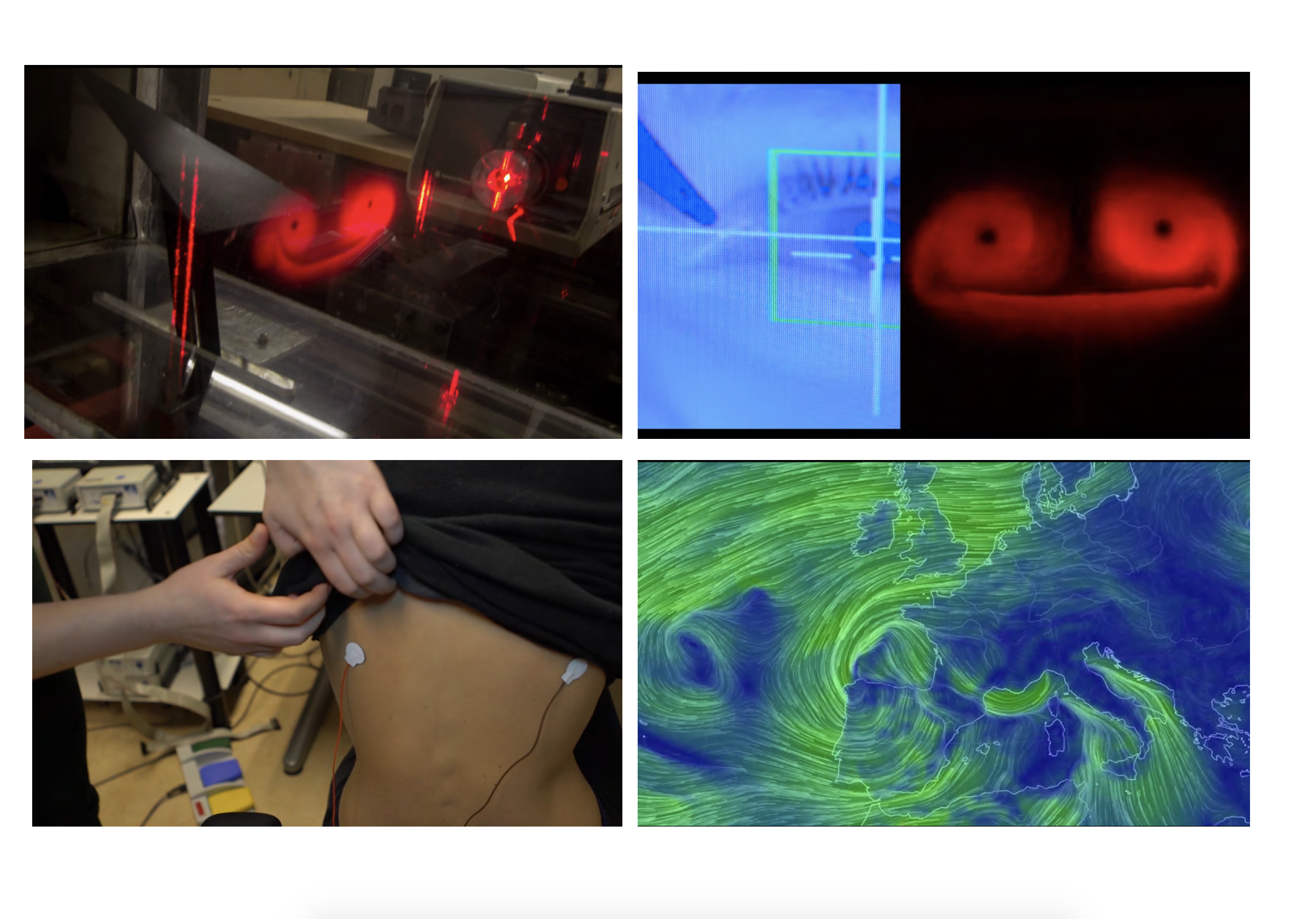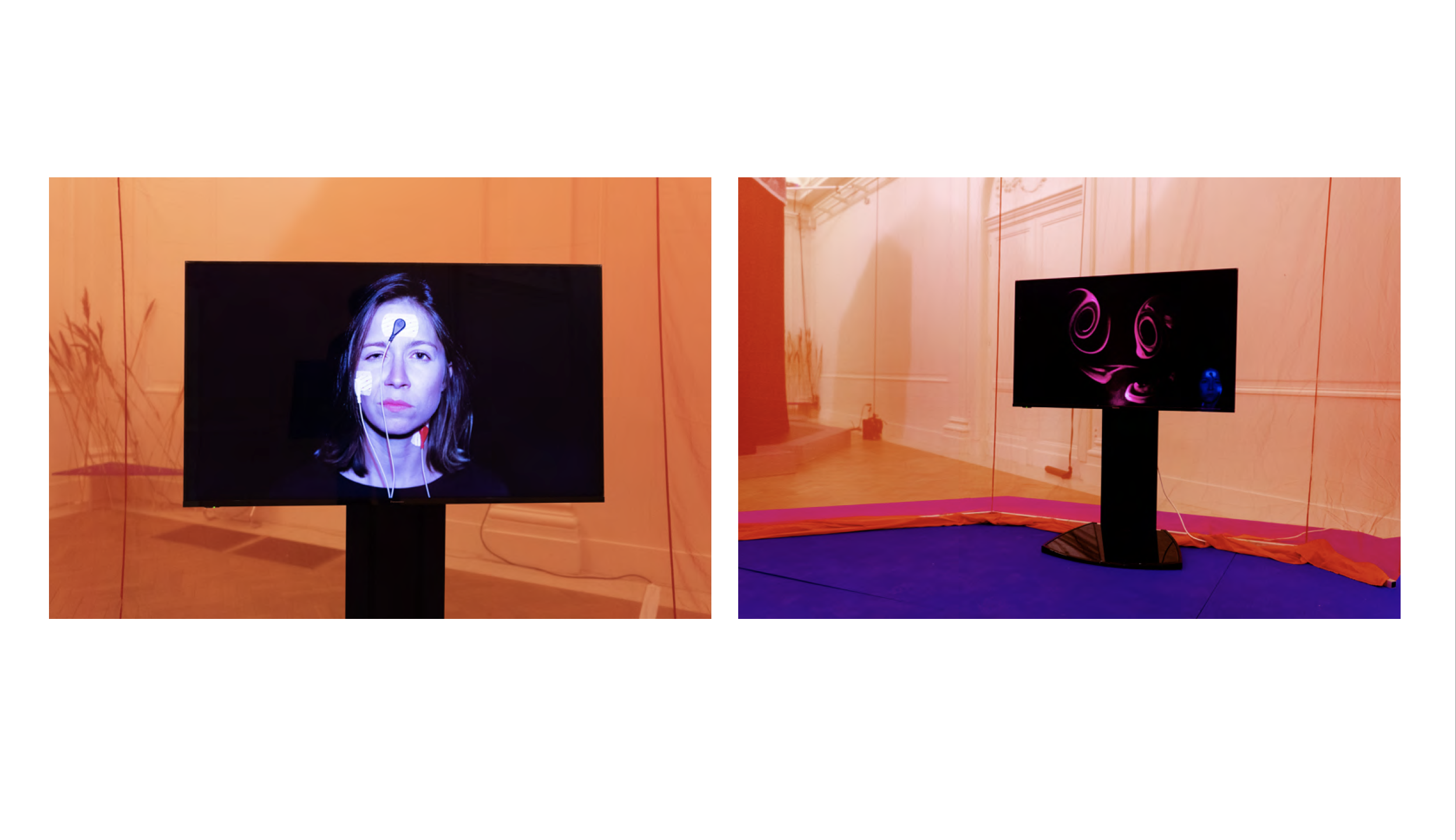Inputs: Embodying the Wind
The Wind Avatar is a turbulence pattern that manifests the face of the wind. A specially designed wind tunnel uses smoke and a laser to visualize the otherwise invisible turbulence pattern. The wind avatar allows for the face of the wind to be embodied by two different inputs. First, the Wind Avatar directly links a person to the wind. Working with Dr. Beatrice de Gelder’s Brain and Emotion Laboratory at the University of Maastricht, bio-electric feedback from emotional responses are detected on a person’s body with electrodes. These inputs change the expressions on the face of the wind in real-time. This frees a person from the corporeal limits of their own body.
This is made possible by using a custom-made piece of software designed by Piero Bisello, Pieter Heremans, and Ertan Umit. The software controls the position of a robotic delta wing in a wind tunnel designed with the von Karman Institute for Fluid Dynamics. The delta wing produces the turbulence pattern that appears as the face of the wind. Smoke and a laser are used to illuminate the otherwise invisible turbulence pattern.
![]()
![]()
In Tower of the Winds
The Wind Avatar resides in the Tower of the Winds. Its form is derived from the Tower of of the Winds in Athens, Greece. Also known as the Horologion of Andronikos Kyrrhestes, it was built in 50 b.c. as one of the first weather stations and to house a clock that regulated the flow of water to measure the flow of time. Our Tower of the Winds houses the the face of the wind itself.
The original Tower of the Winds features eight marble reliefs on its facade. Each represents one of the eight gods of of the wind in Greek Mythology. The marble reliefs on the original tower have been eroded by the winds they represent. The facade of the Tower of the Wind here bears bears these reliefs after having undergone an accelerated wind erosion. A virtual model was lifted from the marble reliefs and subjected to computational winds to determine their form.
![]()
![]()
![]()
![]()
![]()
The Wind Avatar is a turbulence pattern that manifests the face of the wind. A specially designed wind tunnel uses smoke and a laser to visualize the otherwise invisible turbulence pattern. The wind avatar allows for the face of the wind to be embodied by two different inputs. First, the Wind Avatar directly links a person to the wind. Working with Dr. Beatrice de Gelder’s Brain and Emotion Laboratory at the University of Maastricht, bio-electric feedback from emotional responses are detected on a person’s body with electrodes. These inputs change the expressions on the face of the wind in real-time. This frees a person from the corporeal limits of their own body.
This is made possible by using a custom-made piece of software designed by Piero Bisello, Pieter Heremans, and Ertan Umit. The software controls the position of a robotic delta wing in a wind tunnel designed with the von Karman Institute for Fluid Dynamics. The delta wing produces the turbulence pattern that appears as the face of the wind. Smoke and a laser are used to illuminate the otherwise invisible turbulence pattern.


In Tower of the Winds
The Wind Avatar resides in the Tower of the Winds. Its form is derived from the Tower of of the Winds in Athens, Greece. Also known as the Horologion of Andronikos Kyrrhestes, it was built in 50 b.c. as one of the first weather stations and to house a clock that regulated the flow of water to measure the flow of time. Our Tower of the Winds houses the the face of the wind itself.
The original Tower of the Winds features eight marble reliefs on its facade. Each represents one of the eight gods of of the wind in Greek Mythology. The marble reliefs on the original tower have been eroded by the winds they represent. The facade of the Tower of the Wind here bears bears these reliefs after having undergone an accelerated wind erosion. A virtual model was lifted from the marble reliefs and subjected to computational winds to determine their form.




